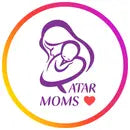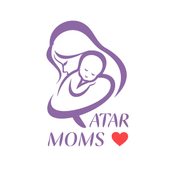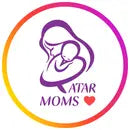Feeding bottle cleaning is one of the most important things that parents should take care of. In the first few months of a baby's life, breastfeeding can't be dispensed with. However, they can pose a significant risk to the baby's health and life if bacteria and germs accumulate over time. To protect the baby from infection, the breastfeeding must be completely clean and free of dirt.
In this article, we will talk about the importance of washing bottles and its impact on the safety of the infant. We will also discuss the steps to follow to clean the baby's bottle properly, in addition to some important tips for maintaining the cleanliness of the bottle and the health of the baby. So, keep reading...
Why is it important to clean baby bottles?
Maintaining the cleanliness of baby bottles is of great importance in maintaining the health and safety of the child. Its importance lies in:
1. Reducing the transfer of germs
Germs and bacteria that accumulate on baby bottles can cause many diseases, such as oral infections, harmful bacteria, and other serious illnesses.
2. Maintaining the cleanliness of the bottle
The accumulation of dirt and deposits on baby bottles reduces their lifespan and causes early damage, and if not properly cleaned, it may affect the child's health and cause discomfort.
3. Maintaining the quality of feeding
Not cleaning baby bottles properly causes the accumulation of milk or liquid particles inside them, which hinders the feeding process and affects the child's comfort during feeding.
What is the best way to clean water bottles?
1. To ensure the cleanliness and health of your baby, you should repeat the following steps daily:
2. Wash your hands thoroughly with soap and water for at least 20 seconds before starting to clean the bottle brush cleaner set.
3. Soak the baby bottle nipple in hot water in a container with warm water and a little mild soap for 5 minutes. The water temperature should be higher than 75°C to kill germs and bacteria.
4. Use a soft, clean toothbrush to scrub the baby bottle nipple inside and out to remove dirt and germs, and avoid using cleaning fluid.
5. Rinse the bottle thoroughly with running water after washing to ensure that all soap or detergent residue is removed.
6. Dry the washing bottles with a clean, dry towel after washing and sterilizing them. Avoid using shared towels or dirty clothes, and place them on a rack to dry completely.
7. Store the bottle in a clean, closed container until it is used again.
Important tips for maintaining the cleanliness of the bottle and the health of the child include the following:
- Regularly change the bottle and do not reuse it more than once, even if it has not been used for a long time.
- Wash the bottle with warm water and mild soap after each use, and dry it well before using it again.
- Avoid using harsh disinfectants to clean the bottle, as they may leave residues and affect the child's health.
- Keep hands clean and wash them well with soap and water before handling the bottle, and avoid touching dirty surfaces before using it.
- Avoid sharing the bottle between children to prevent the spread of germs and bacteria between them and to prevent the children from getting infected.
- Use the appropriate bottle for your child's age, change it regularly, and check that the bottle does not have any cracks or damage before using it.
- Clean the baby's mouth after feeding with a piece of cotton soaked in warm water to maintain the health of the mouth and teeth.
- Store the bottle in a clean, dry place away from dust and germs, and avoid putting it in the refrigerator or freezer.
Method for cleaning plastic bottles
- There are some slight differences in the method of cleaning plastic bottles compared to other types of bottles, as plastic bottles can be cleaned using warm water and mild soap, but harsh disinfectants that may affect the baby's health should be avoided.
- Some plastic bottles may contain small parts or small openings that are difficult to reach, so a soft toothbrush can be used to clean them thoroughly. After cleaning, the bottle should be rinsed with clean water and dried well before being used again. It is important to avoid microwaving or putting it in the dishwasher unless it can withstand high temperatures.
In the end, feeding bottle cleaninge may seem like a simple and easy task, but it plays an important role in maintaining the child's health and safety. In this article, we have provided you with the method for cleaning baby bottles and some necessary guidelines for the child's safety.
 FREE DELIVERY FOR ORDERS ABOVE 100 QAR
FREE DELIVERY FOR ORDERS ABOVE 100 QAR DELIVERY WITHIN 3 HOURS
DELIVERY WITHIN 3 HOURS APPLE PAY AND CARD PAYMENT AVAILABLE
APPLE PAY AND CARD PAYMENT AVAILABLE



